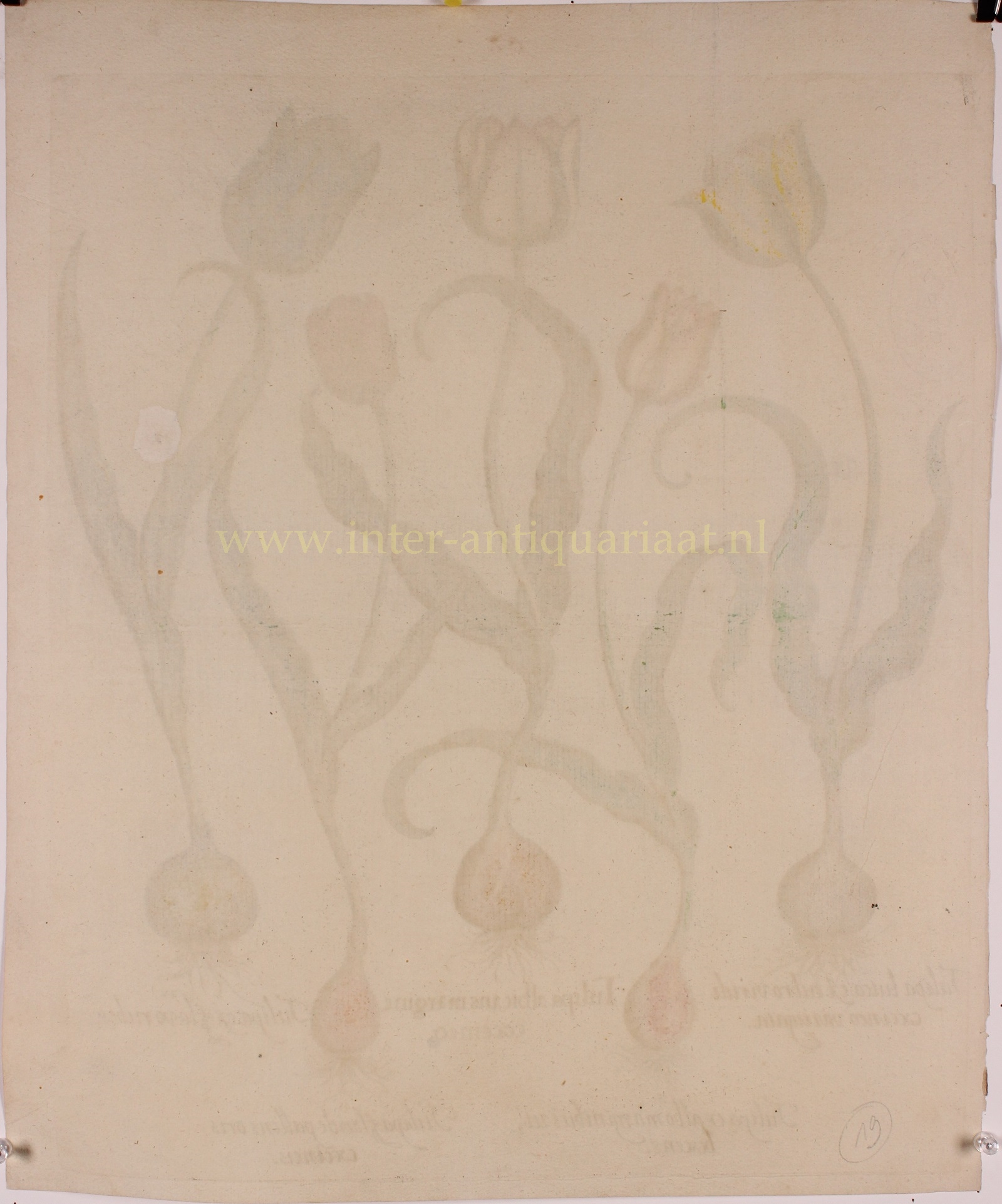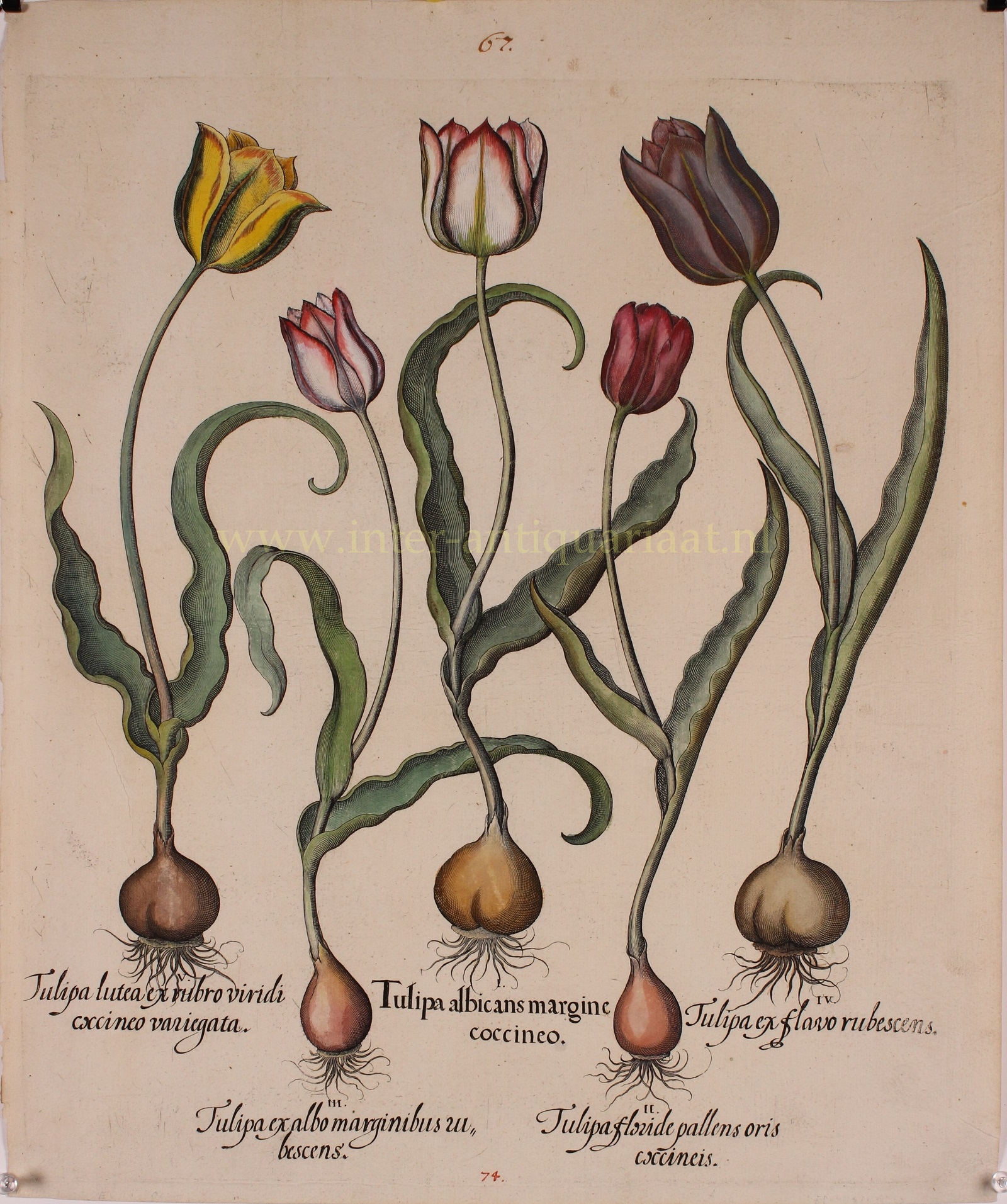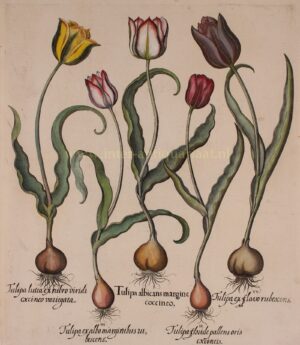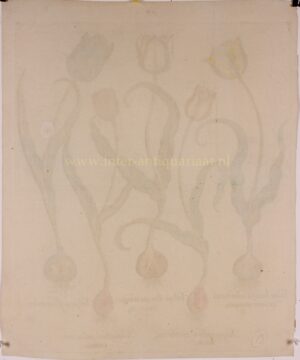TULIPS FROM BASILIUS BESLER’S FLORILEGIUM
Copper engraving from the magnificent Hortus Eystettensis by Basilius Besler, published in 1613. Coloured by a later hand. Size (print) 48 x 38.5 cm.
Besler (1561 – 1629) was a respected pharmacist and botanist from the Bavarian town of Nuremberg. He was in charge of the gardens of Johann Konrad von Gemmingen, Prince Bishop of Eichstätt. The bishop had the only important European botanical garden outside of Italy.
In the centuries before Besler, the emphasis of botanical books had been on medicinal and culinary herbs, and these had usually been depicted in a crude manner. The images were often inadequate for identification, and had little claim to being aesthetic. The Hortus Eystettensis changed botanical art overnight. The plates were of garden flowers, herbs and vegetables and exotic plants. These were depicted near life-size in detail. The layout was artistically pleasing and quite modern in concept, with the hand-colouring adding greatly to the final effect. The work was first published in 1613 and consisted of 367 copper engravings, with an average of three plants per page, so that a total of 1084 species were depicted.
The first edition was printed in 300 copies, which took four years to sell. The book was printed on large sheets measuring 57 x 46 cm. Two versions were produced, cheap black and white for use as a reference book, and a luxury version without text, printed on quality paper and lavishly hand-coloured. The luxury version sold for an exorbitant 500 florins, while the plain, uncoloured copies went for 35 florins each. Besler could finally purchase a comfortable home in a fashionable part of Nürnberg at a price of 2 500 florins – five coloured copies’ worth of ‘Hortus Eystettensis’.The work generally reflected the four seasons, showing first the flowering and then the fruiting stages. “Winter” was sparsely represented with a mere 7 plates. “Spring” was a season of abundance with 134 plates illustrating 454 plants and “Summer” in full swing showed 505 plants on 184 plates. “Autumn” closed off the work with 42 plates and 98 species.
Price: SOLD







